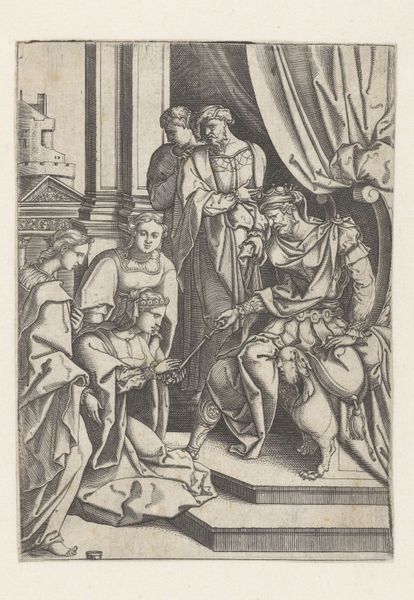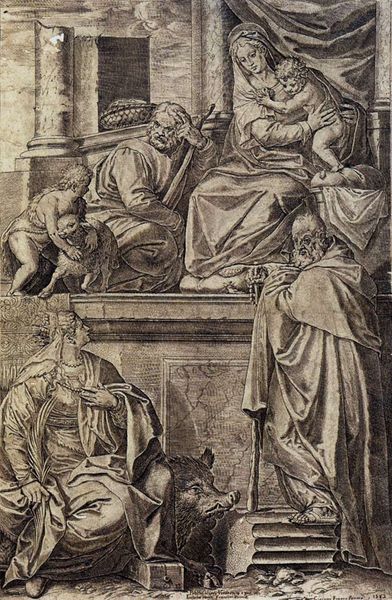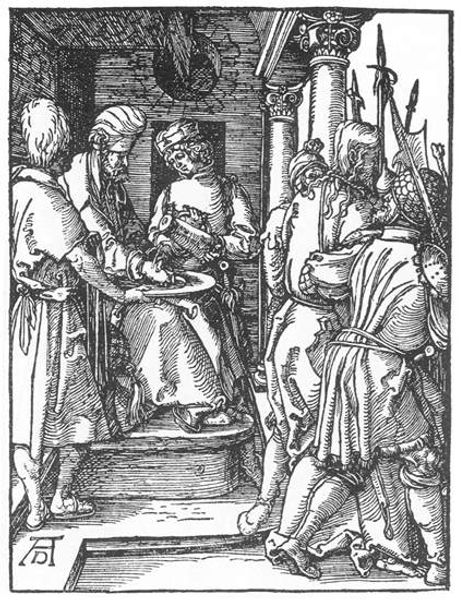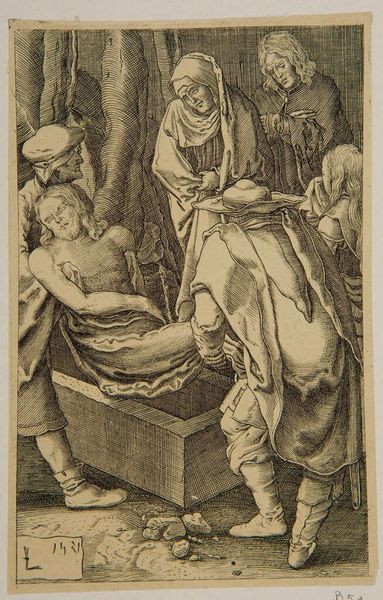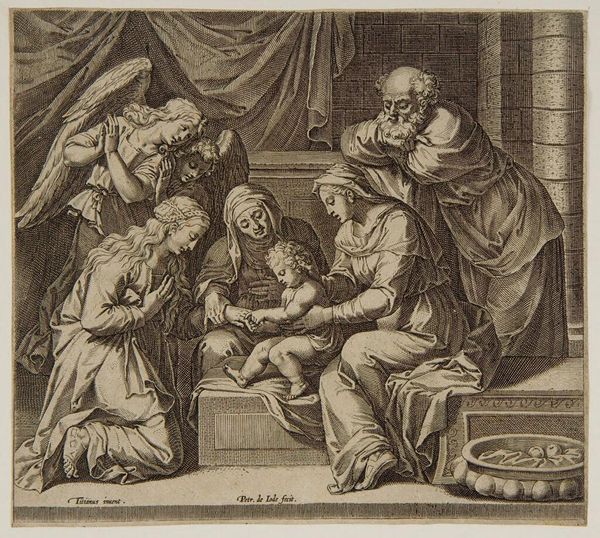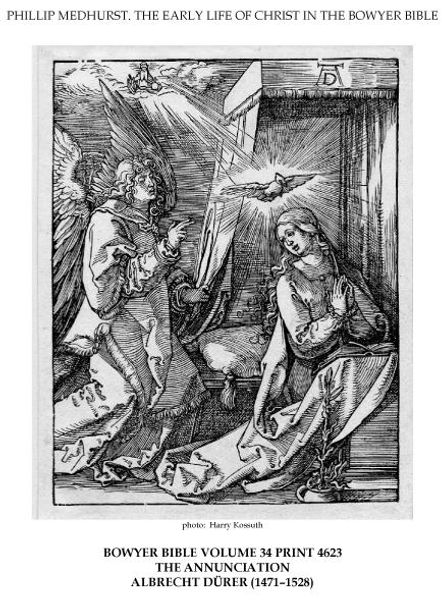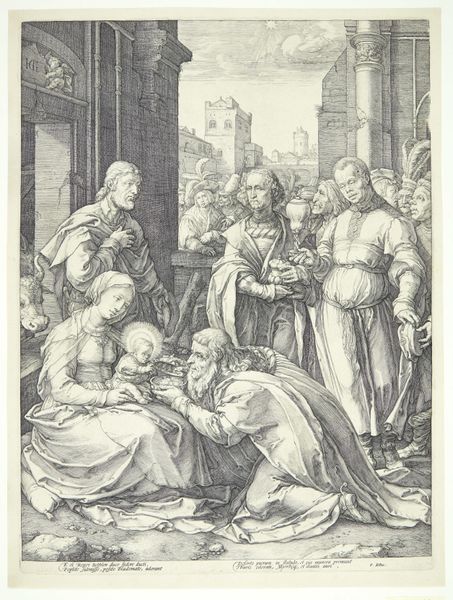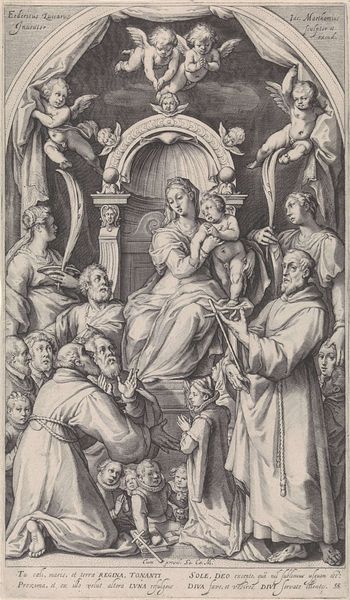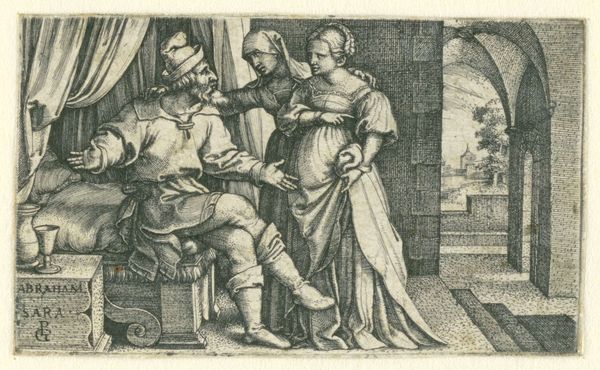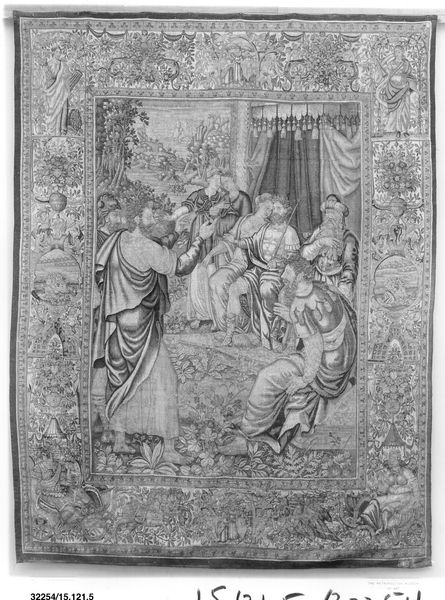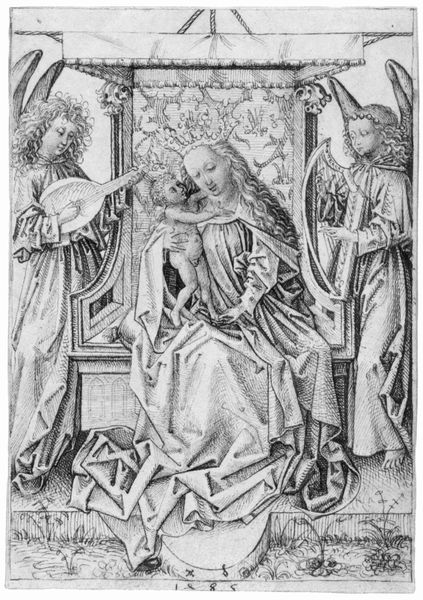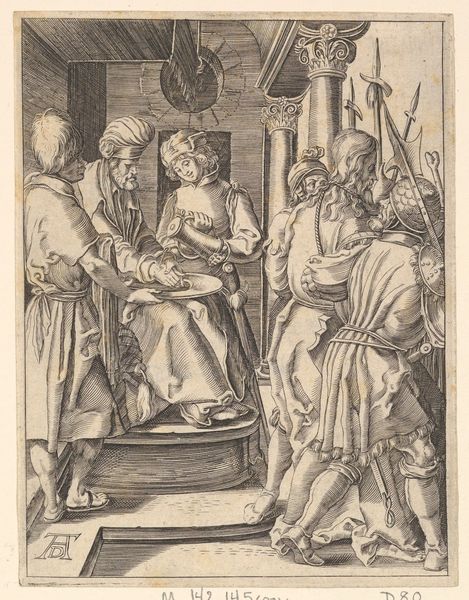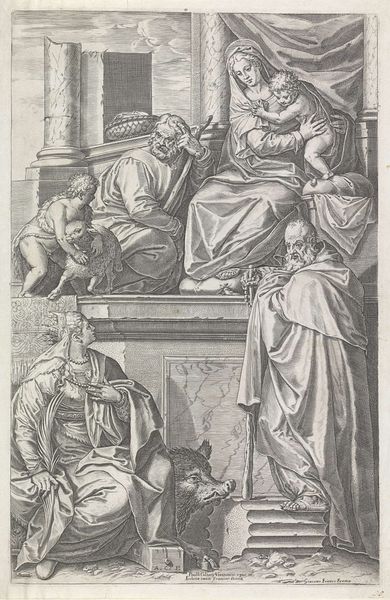
drawing, print, engraving
#
drawing
#
baroque
# print
#
figuration
#
portrait drawing
#
history-painting
#
engraving
#
virgin-mary
Dimensions: sheet: 16 1/4 x 13 in. (41.2 x 33 cm) plate: 13 1/4 x 9 1/16 in. (33.6 x 23 cm)
Copyright: Public Domain
Curator: Ah, yes. Here we have Benoit Farjat’s engraving, "Marriage of the Virgin," likely dating from between 1645 and 1724. Editor: Striking! All those stark lines... it feels like peering into an incredibly detailed dream. Almost unsettling in its precision. Curator: Precisely. Look at how the crisp engraving brings forth texture – from the weighty folds of the drapery to the delicate patterning on the High Priest's garments. This emphasis echoes the Baroque, wouldn’t you agree? Editor: No question. The process is really highlighted by Farjat’s choice of engraving. Imagine the labor, the painstaking process of etching into the plate, wiping the ink, pressing the paper… such a physically demanding craft, made even more interesting given the aristocratic setting. Curator: It gives a human quality to the divine, don't you think? Think about it, Farjat translates a momentous spiritual event, The Virgin Mary’s marriage to Joseph, into these very physical terms. Editor: A bit like alchemy, transmuting lead into gold, maybe? I keep getting drawn to the onlookers – their faces partially obscured. Are they symbolic observers, maybe stand-ins for us, bearing witness to the scene? Curator: Fascinating point. Perhaps they symbolize the communities and lives shaped by the holy matrimony, anchoring the figures into earthly society? It is currently located at the Metropolitan Museum of Art in New York. Editor: And the setting, within what appears to be a very constructed, architectural space... the marriage solidifies not just a union, but structures of power. I am interested in these contradictions – the divine taking shape in decidedly material forms. Curator: This pushes us to rethink simple assumptions about the period, the materials, and their use for conveying not just what is holy but the very conditions of its representation. Editor: Absolutely. Looking again, I feel that contrast even more keenly, from the artist’s intention down to the production process. I’m leaving with more questions than answers, which is precisely the joy of truly encountering art.
Comments
No comments
Be the first to comment and join the conversation on the ultimate creative platform.
